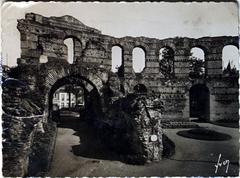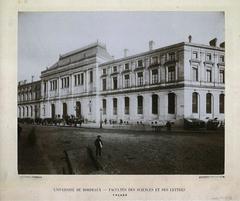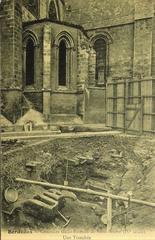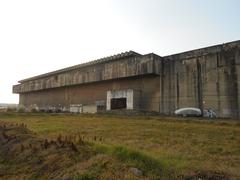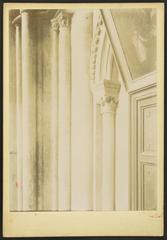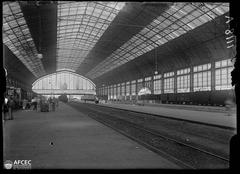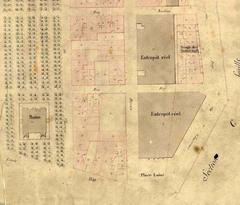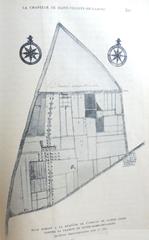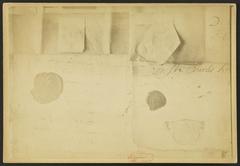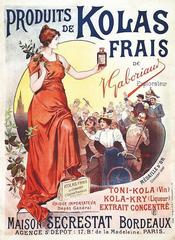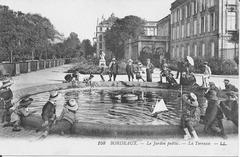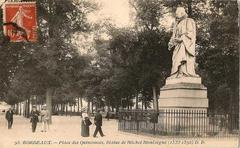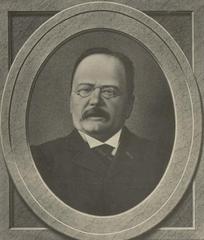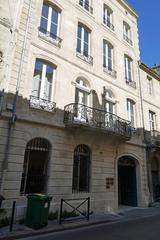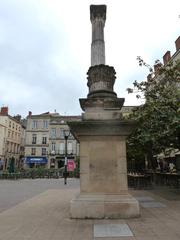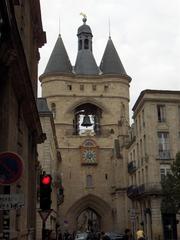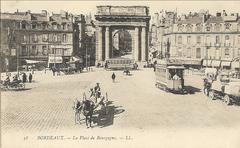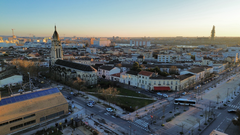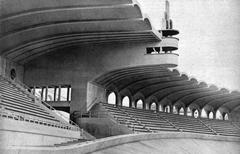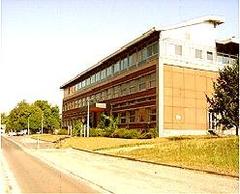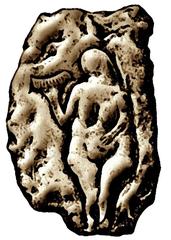Visiting Jolly in Bordeaux: Hours, Tickets, and Tips
Date: 18/07/2024
Introduction
Nestled within the historic city of Bordeaux, France, Jolly is a neighborhood that seamlessly blends rich historical heritage with contemporary vibrancy. Often overlooked by casual travelers, Jolly is a treasure trove of historical, architectural, and cultural wonders dating back to the Roman era when Bordeaux was known as Burdigala (Bordeaux Tourism). From its medieval streets echoing the era of the Bordeaux Cathedral’s construction in the 11th century (UNESCO), to the grand mansions of the Age of Enlightenment that reflect Bordeaux’s opulent past (Bordeaux Wine History), Jolly offers a unique glimpse into the city’s multifaceted history. Today, it is a vibrant district known for its eclectic mix of trendy cafes, lively markets, and significant cultural institutions. This comprehensive guide aims to provide potential visitors with essential insights into Jolly’s historical and architectural significance, practical visiting tips, and a look at nearby attractions, ensuring an enriching experience whether you are a history buff, architecture enthusiast, or casual explorer.
Table of Contents
- [Historical Background](#historical-backgroundhistorical-background)
- [Early Beginnings](#early-beginningsearly-beginnings)
- [Medieval Period](#medieval-periodmedieval-period)
- [The Age of Enlightenment](#the-age-of-enlightenmentthe-age-of-enlightenment)
- [The French Revolution and Beyond](#the-french-revolution-and-beyondthe-french-revolution-and-beyond)
- [20th Century Developments](#20th-century-developments20th-century-developments)
- [Contemporary Jolly](#contemporary-jollycontemporary-jolly)
- [Visitor Information](#visitor-informationvisitor-information)
- [Ticket Prices and Opening Hours](#ticket-prices-and-opening-hoursticket-prices-and-opening-hours)
- [Travel Tips](#travel-tipstravel-tips)
- [Nearby Attractions](#nearby-attractionsnearby-attractions)
- [Accessibility](#accessibilityaccessibility)
- [Architectural Heritage](#architectural-heritagearchitectural-heritage)
- [Cultural Significance](#cultural-significancecultural-significance)
- [Preservation Efforts](#preservation-effortspreservation-efforts)
- [FAQ](#faqfaq)
- [Conclusion](#conclusionconclusion)
Historical Background
Early Beginnings
Jolly, a quaint neighborhood in Bordeaux, France, has a rich history that dates back to the Roman era. Bordeaux, known as Burdigala during Roman times, was a significant port city in the Roman Empire. The area now known as Jolly was part of this thriving settlement. Archaeological findings, including remnants of Roman roads and villas, indicate that Jolly was an integral part of the ancient city’s infrastructure (Bordeaux Tourism).
Medieval Period
During the medieval period, Bordeaux and its surrounding areas, including Jolly, experienced significant growth and development. The construction of the Bordeaux Cathedral in the 11th century marked a pivotal moment in the city’s history. Jolly, being in close proximity to the cathedral, became a hub for religious and commercial activities. The neighborhood’s narrow, winding streets and medieval architecture are a testament to this era (UNESCO).
The Age of Enlightenment
The 18th century was a golden age for Bordeaux, often referred to as the Age of Enlightenment. This period saw the city transform into a major center for trade and culture. Jolly, with its strategic location near the Garonne River, played a crucial role in the wine trade, which flourished during this time. The elegant townhouses and grand mansions that line the streets of Jolly today were built during this prosperous era, reflecting the wealth and sophistication of Bordeaux’s elite (Bordeaux Wine History).
The French Revolution and Beyond
The French Revolution brought significant changes to Bordeaux and Jolly. The neighborhood witnessed political upheaval and social transformation as revolutionary ideas spread across France. Many of the grand estates in Jolly were confiscated and repurposed during this period. The 19th century saw further modernization with the advent of the railway, which connected Bordeaux to other major cities, enhancing Jolly’s accessibility and economic significance (French Revolution).
20th Century Developments
The 20th century was a period of both turmoil and progress for Jolly. The two World Wars left their mark on the neighborhood, with many buildings damaged or destroyed. However, the post-war period saw extensive reconstruction and modernization efforts. The establishment of the University of Bordeaux in the mid-20th century brought a youthful and academic vibe to Jolly, with many students and faculty members residing in the area (University of Bordeaux).
Contemporary Jolly
Today, Jolly is a vibrant and eclectic neighborhood that seamlessly blends its rich historical heritage with modern amenities. The area is known for its lively markets, trendy cafes, and cultural institutions. The preservation of historical landmarks, such as the 18th-century mansions and medieval streets, alongside contemporary developments, makes Jolly a unique and attractive destination for both locals and tourists (Bordeaux Tourism).
Visitor Information
Ticket Prices and Opening Hours
Many of Jolly’s historical sites and cultural institutions have specific visiting hours and may require tickets for entry. For example, the Museum of Decorative Arts and Design, housed in the Hôtel de Lalande, typically charges a nominal fee and is open from 10 AM to 6 PM, Tuesday through Sunday. It’s advisable to check the official websites or contact the venues directly for the most up-to-date information.
Travel Tips
- Best Time to Visit: Spring (April to June) and fall (September to November) offer the most pleasant weather for exploring Jolly.
- Getting There: Jolly is easily accessible by public transport, including trams and buses. The Bordeaux Saint-Jean railway station is also nearby.
- Local Cuisine: Don’t miss out on trying local delicacies such as canelés (small pastries) and Bordeaux wines at the neighborhood’s cafes and restaurants.
Nearby Attractions
- Bordeaux Cathedral: A stunning example of Gothic architecture, just a short walk from Jolly.
- Place de la Bourse: A beautiful square with the iconic Water Mirror, perfect for a leisurely stroll.
- Cité du Vin: A modern wine museum offering interactive exhibits and tastings, located a short tram ride away.
Accessibility
Jolly is generally accessible to visitors with mobility issues, although some medieval streets may be challenging. Many modern facilities and attractions have provisions for wheelchair access. It’s always a good idea to inquire in advance.
Architectural Heritage
Jolly’s architectural landscape is a mosaic of different historical periods. The neighborhood boasts an array of architectural styles, from Romanesque and Gothic to Renaissance and Baroque. Notable buildings include the Church of Saint-Pierre, a stunning example of Gothic architecture, and the Hôtel de Lalande, an 18th-century mansion that now houses the Museum of Decorative Arts and Design (Museum of Decorative Arts and Design).
Cultural Significance
Jolly’s cultural significance extends beyond its architectural heritage. The neighborhood has been a melting pot of artistic and intellectual activity for centuries. It has been home to numerous artists, writers, and philosophers who have contributed to Bordeaux’s rich cultural tapestry. Today, Jolly continues to be a cultural hotspot, hosting various festivals, art exhibitions, and literary events throughout the year (Bordeaux Culture).
Preservation Efforts
Preserving Jolly’s historical and cultural heritage is a priority for local authorities and residents. Various initiatives have been undertaken to protect and restore historical buildings and landmarks. The neighborhood is part of Bordeaux’s UNESCO World Heritage site, which ensures that its unique character and historical significance are maintained for future generations (UNESCO).
FAQ
What are the visiting hours for Jolly, Bordeaux?
Visiting hours vary by attraction. For instance, the Museum of Decorative Arts and Design is open from 10 AM to 6 PM, Tuesday through Sunday. Check specific sites for accurate times.
How much do tickets cost for Jolly’s historical sites?
Ticket prices vary. The Museum of Decorative Arts and Design charges a small fee, typically around €5-€10. Always verify on the official websites.
What are some must-see attractions in Jolly?
Don’t miss the Church of Saint-Pierre, Bordeaux Cathedral, and Place de la Bourse. Each offers a unique glimpse into Bordeaux’s history and culture.
Is Jolly accessible for visitors with disabilities?
While many areas are accessible, some medieval streets may be challenging. Most modern attractions offer wheelchair access.
Conclusion
Jolly, Bordeaux, is a neighborhood steeped in history, with each era leaving its indelible mark on its landscape and culture. From its Roman roots to its contemporary vibrancy, Jolly offers a fascinating glimpse into the past while embracing the present. Its rich historical background, architectural heritage, and cultural significance make it a must-visit destination for anyone exploring Bordeaux. Download the Audiala mobile app for more travel tips, check out our related posts, and follow us on social media to stay updated on the latest happenings in Jolly and beyond.
References
- Bordeaux Tourism, 2024, Bordeaux Tourism source url
- UNESCO, 2024, UNESCO source url
- Bordeaux Wine History, 2024, Bordeaux Wine History source url
- CAPC Museum of Contemporary Art, 2024, Bordeaux Tourism source url
